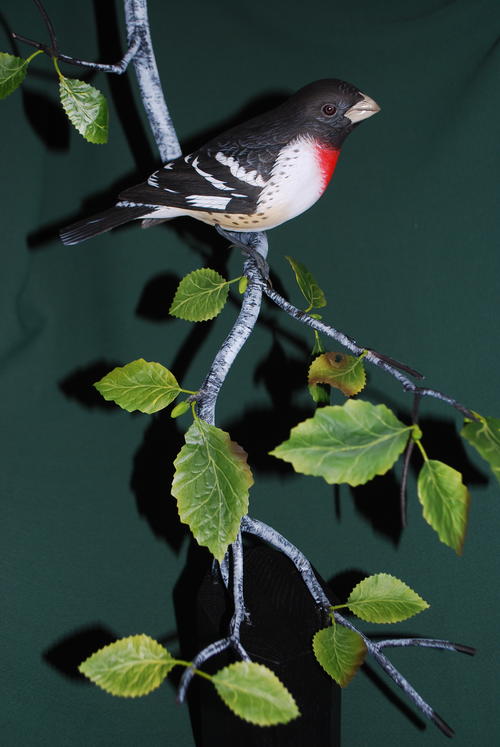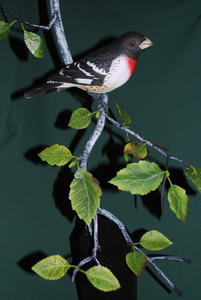Rose-Breasted Grosbeak Part 2

Bob Lavender is a retired Canadian Forces military cook residing in Saskatoon, Saskatchewan. He has been carving competitively since 1987 and has been a consistent blue-ribbon winner across North America.
In part one from the Winter 2015 issue, I demonstrated how I carved a rose-breasted grosbeak. In this article, I will paint it. I will airbrush some of the bird and use a hand brush with washes for other areas. It’s important to use thin washes for most applications. Use my mixture percentages as guides only. You should match your colors to what you see in your reference material.
My brushes will be a mixing brush, cat’s tongue (I usually use three different sizes), and #2 and #1 rounds. My airbrush is a Harder & Steenbeck Infinity, with the psi set at 20/25. The colours are Jo Sonja titanium white, warm white, raw sienna, cadmium yellow light, naphtha red light, burnt umber, ultramarine blue, and carbon black.
Read the rest of this article in Wildfowl Carving Magazine's Spring 2015 issue.
Read NextRed-crested Cardinal



